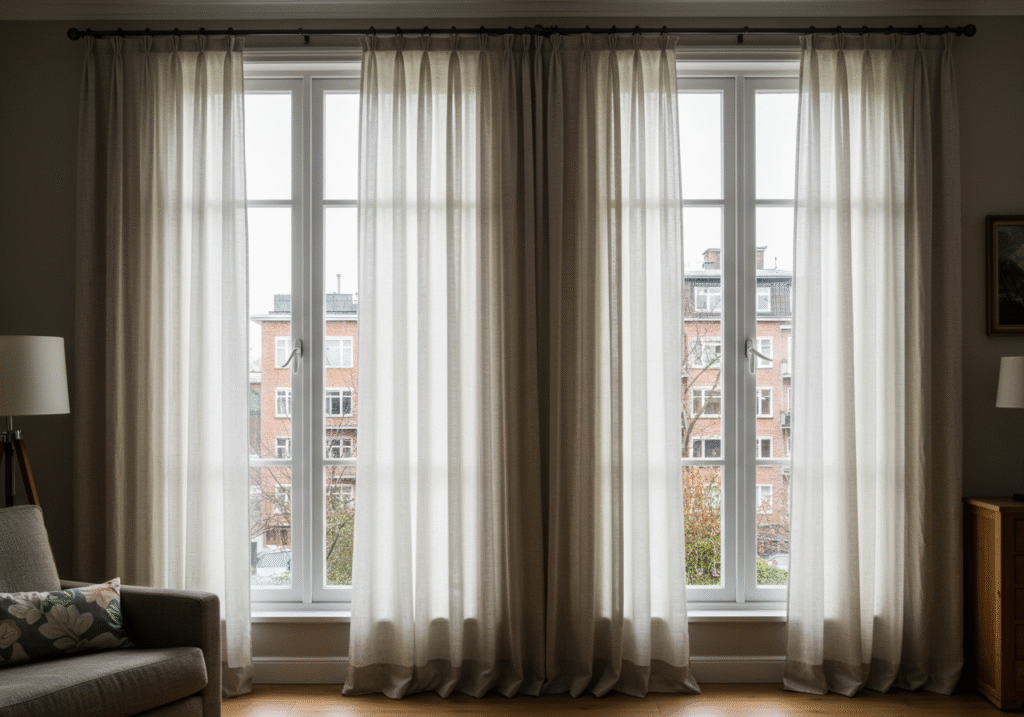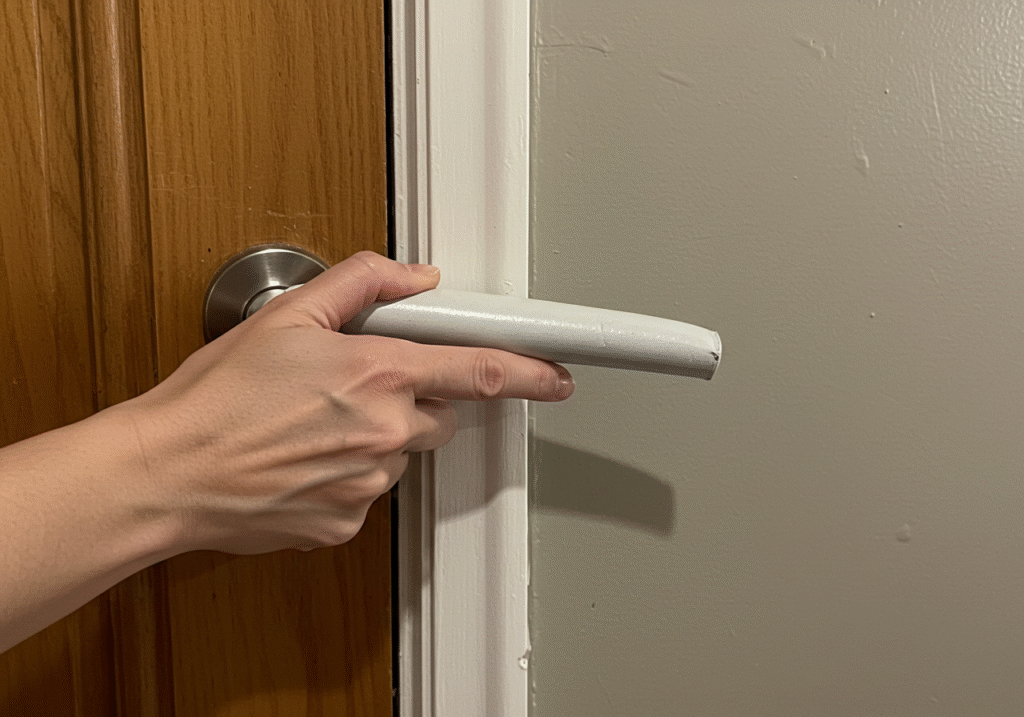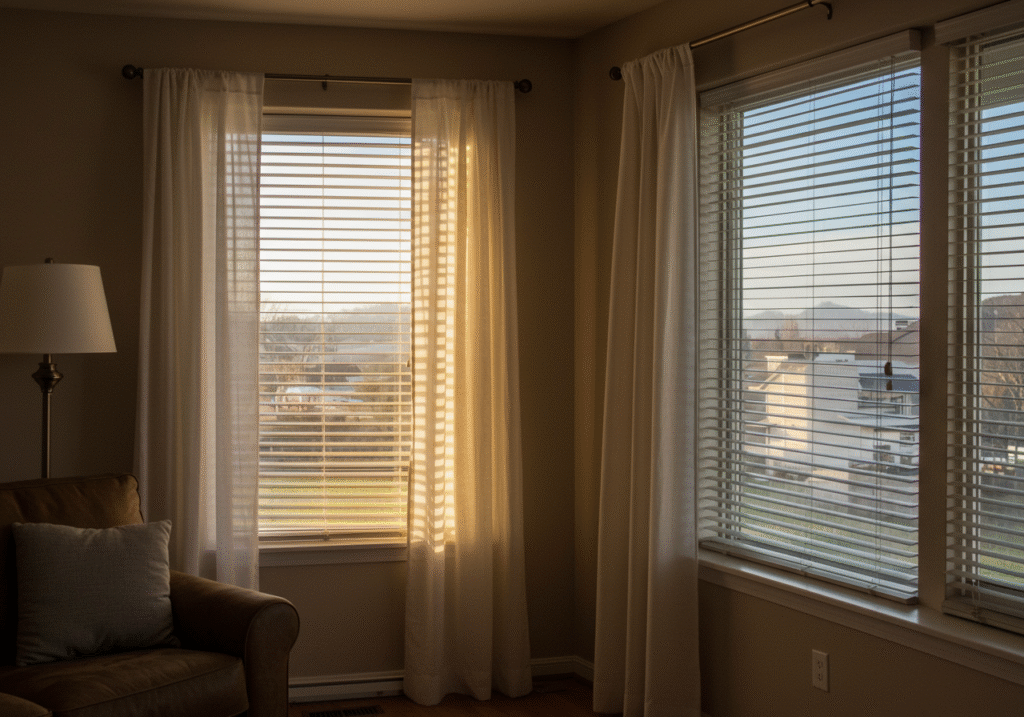When winter arrives, many people ask: “How can I keep my room warm without high energy bills?” A cold bedroom or living room not only feels uncomfortable but can also affect your sleep and daily productivity. Fortunately, there are many simple and effective ways to heat a room in winter, ranging from budget-friendly tricks to advanced heating solutions.
1. Use Thermal or Heavy Curtains
Contents
- 1 1. Use Thermal or Heavy Curtains
- 2 2. Seal Gaps Around Windows and Doors
- 3 3. Add Rugs or Carpets to Bare Floors
- 4 4. Rearrange Your Furniture
- 5 5. Use Portable Room Heaters
- 6 6. Try Electric Blankets or Heated Bedding
- 7 7. Maximize Natural Sunlight
- 8 8. Add Extra Layers of Warmth
- 9 9. Use a Fireplace or Candles for Ambiance and Warmth
- 10 10. Improve Insulation for Long-Term Warmth
- 11 Final Thoughts
Windows are one of the biggest sources of heat loss. Investing in thermal curtains or heavy drapes helps trap warm air inside. During the day, open your curtains to let in natural sunlight. At night, close them to keep the heat from escaping.

2. Seal Gaps Around Windows and Doors
Even small gaps allow cold drafts to sneak into your room. Use weatherstripping, caulk, or door draft stoppers to block leaks. Sealing gaps is a low-cost way to instantly increase room warmth and reduce energy waste.

3. Add Rugs or Carpets to Bare Floors
Hardwood, tile, and laminate floors get cold quickly in winter. Covering them with area rugs, carpets, or mats adds insulation and prevents heat from escaping through the floor. Plus, it makes your room feel much cozier.

4. Rearrange Your Furniture
Positioning your furniture smartly can make a difference. Move beds, desks, or sofas away from cold windows or exterior walls, and closer to heat sources like a radiator or space heater. This way, you’ll feel warmer without increasing energy use.

5. Use Portable Room Heaters
A space heater is one of the fastest ways to heat a room in winter. Options include:

- Oil-filled radiators – great for long-lasting heat.
- Ceramic heaters – energy-efficient for small spaces.
- Infrared heaters – warm objects and people directly.
Always choose a model with safety features like tip-over protection.
6. Try Electric Blankets or Heated Bedding
For cozy sleep, use electric blankets, heating pads, or heated mattress covers. These devices warm your bed directly, so you don’t need to heat the entire room overnight. They’re energy-saving and provide instant comfort.

7. Maximize Natural Sunlight
Sunlight is a free and powerful source of heat. During the day, open blinds and curtains to let the sun warm your room. In the evening, close them tightly to trap the heat indoors. This simple practice helps reduce heating costs.

8. Add Extra Layers of Warmth
Sometimes the simplest solution is layering. Use fleece throws, extra quilts, or thick comforters to make your room more inviting. Decorative pillows and cushions not only look stylish but also create added insulation.

9. Use a Fireplace or Candles for Ambiance and Warmth
If your home has a fireplace, use it on cold nights to naturally warm your room. For smaller spaces, even candles can raise the temperature slightly while creating a cozy winter atmosphere. Always follow fire safety precautions.

10. Improve Insulation for Long-Term Warmth
If you want a lasting solution, consider adding insulation to your walls, ceiling, and attic. Even simple DIY methods, like using foam boards or bubble wrap on windows, can help reduce heat loss. Good insulation keeps your home warm in winter and cool in summer.

Final Thoughts
Keeping your room warm in winter doesn’t always mean spending more money on heating. From sealing windows and using thermal curtains to investing in portable heaters and electric blankets, these 10 ideas can make your space cozy, energy-efficient, and comfortable.

